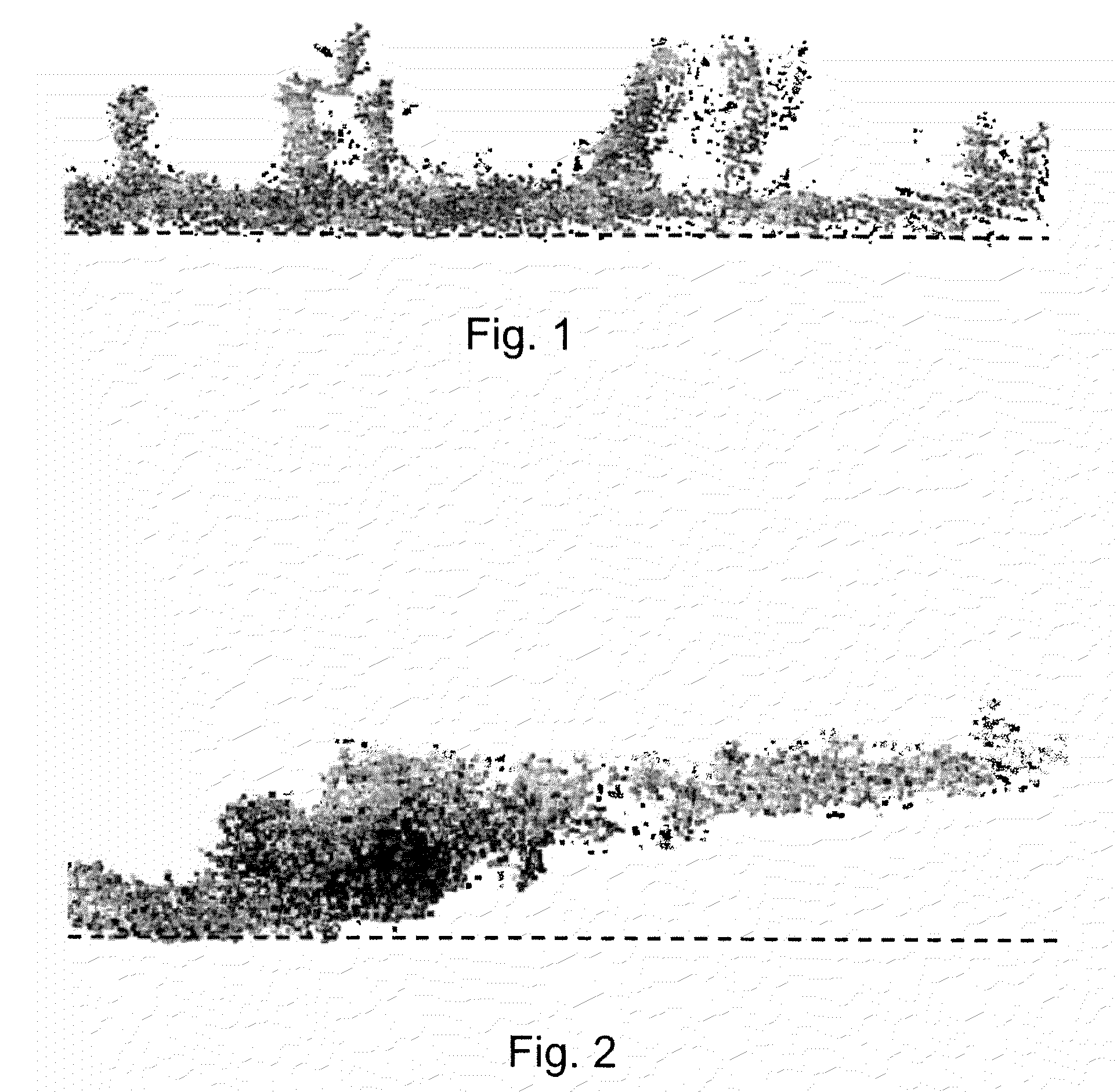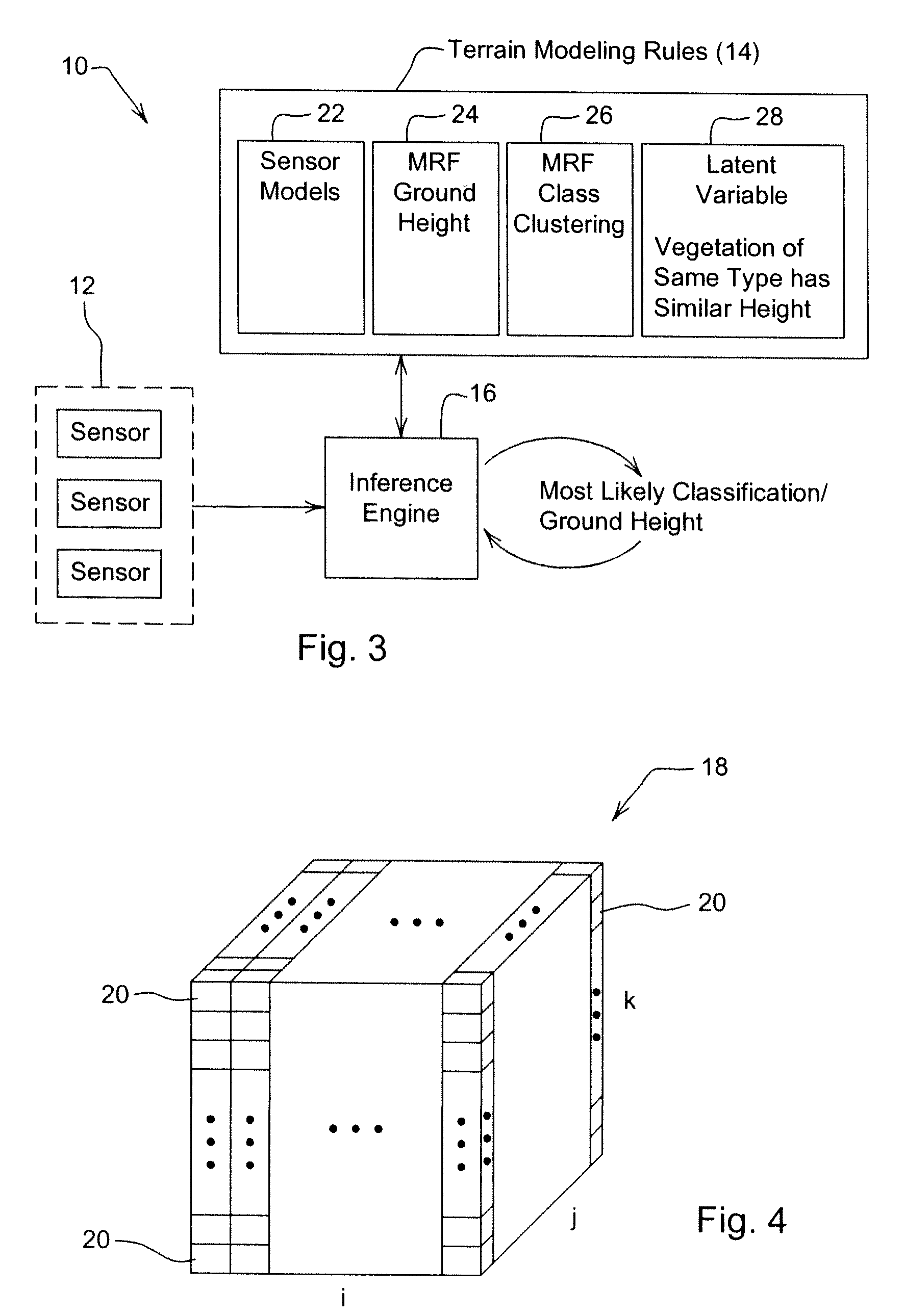System and method for generating a terrain model for autonomous navigation in vegetation
a technology of vegetation and terrain model, applied in the direction of vehicle position/course/altitude control, process and machine control, instruments, etc., can solve the problems of unfavorable autonomous navigation, difficult obstacle detection, and inability to train classifiers individually to detect all possible types of obstacles, etc., to achieve stable and robust navigation
- Summary
- Abstract
- Description
- Claims
- Application Information
AI Technical Summary
Benefits of technology
Problems solved by technology
Method used
Image
Examples
Embodiment Construction
[0028]FIG. 3 illustrates a system 10 constructed according to the teachings of the present disclosure. The system 10 is constructed of an array of sensors 12, terrain modeling rules 14, and an inference engine 16 responsive to both the sensor array 12 and the terrain modeling rules 14. In attempting to classify the terrain in any given volume 18, see FIG. 4, the volume 18 is divided into a plurality of small cubes 20 called voxels. Each voxel 20 is assigned an initial class (ground, vegetation, obstacle, or open space) by the inference engine 16 based on information provided by the sensor array 12 operating in conjunction with sensor models 22, which are part of the terrain modeling rules 14. Note that the sensor models 22 have been trained (as is discussed below) to recognize classes. For example, the sensor array 12 may be comprised of a video camera, an infrared sensor, and a laser range finder. The data produced by these sensors is processed by the inference engine 16 in conjunc...
PUM
 Login to View More
Login to View More Abstract
Description
Claims
Application Information
 Login to View More
Login to View More - R&D
- Intellectual Property
- Life Sciences
- Materials
- Tech Scout
- Unparalleled Data Quality
- Higher Quality Content
- 60% Fewer Hallucinations
Browse by: Latest US Patents, China's latest patents, Technical Efficacy Thesaurus, Application Domain, Technology Topic, Popular Technical Reports.
© 2025 PatSnap. All rights reserved.Legal|Privacy policy|Modern Slavery Act Transparency Statement|Sitemap|About US| Contact US: help@patsnap.com



